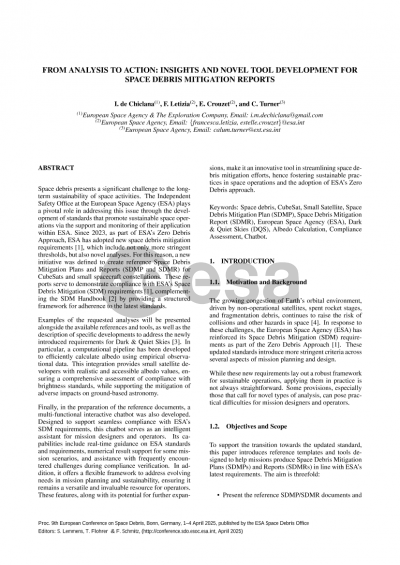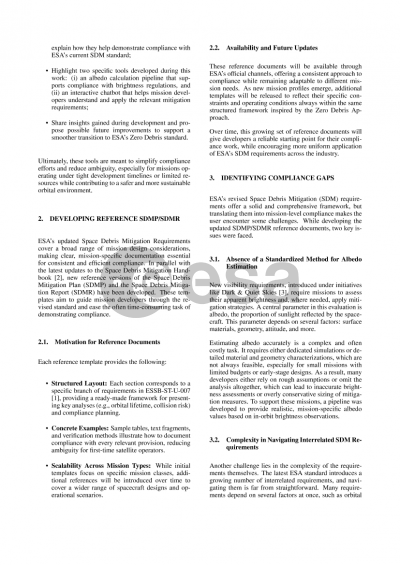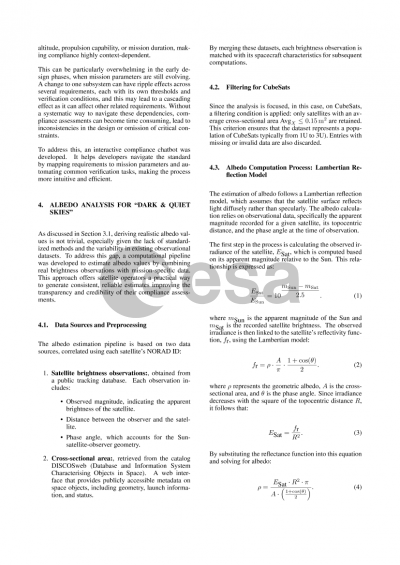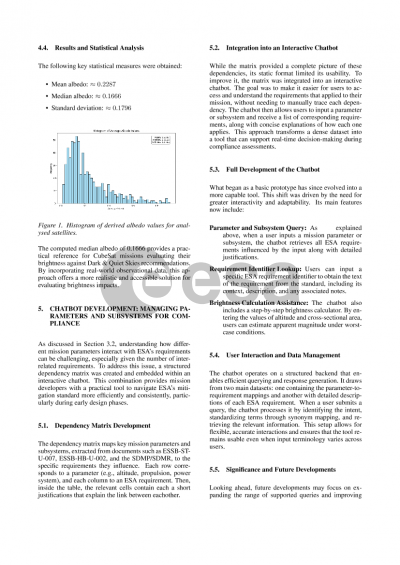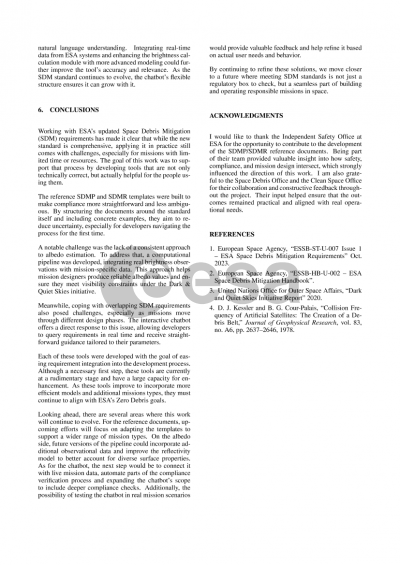Document details

Abstract
Space debris presents a significant challenge to the long-term sustainability of space activities. The Independent Safety Office at the European Space Agency (ESA) plays a pivotal role in addressing this issue through the development of standards that promote sustainable space operations via the support and monitoring of their application within ESA.
Since 2023, as part of ESA's Zero Debris Approach, ESA has adopted new space debris mitigation requirements [1], which include not only more stringent thresholds, but also novel analyses. For this reason, a new initiative was defined to create reference Space Debris Mitigation Plans and Reports (SDMP and SDMR) for CubeSats and small spacecraft constellations. These reports serve to demonstrate compliance with ESA's Space Debris Mitigation (SDM) requirements [1], complementing the SDM Handbook [2] by providing a structured framework for adherence to the latest standards.
Examples of the requested analyses will be presented alongside the available references and tools, as well as the description of specific developments to address the newly introduced requirements for Dark & Quiet Skies. In particular, a computational pipeline has been developed to efficiently calculate albedo using empirical observational data. This integration provides small satellite developers with realistic and accessible albedo values, ensuring a comprehensive assessment of compliance with brightness standards, while supporting the mitigation of adverse impacts on ground-based astronomy.
Finally, in the preparation of the reference documents, a multi-functional interactive chatbot was also developed. Designed to support seamless compliance with ESA’s SDM requirements, this chatbot serves as an intelligent assistant for mission designers and operators. Its capabilities include real-time guidance on ESA standards and requirements, numerical result support for some mission scenarios, and assistance with frequently encountered challenges during compliance verification. Additionally, it offers a flexible framework to address evolving needs in mission planning and sustainability, ensuring it remains a versatile and invaluable resource for operators. These features, along with its potential for further expansions, make it an innovative tool in streamlining space debris mitigation efforts, hence fostering sustainable practices in space operations and the adoption of ESA's Zero Debris approach.
References:
[1] ESSB-ST-U-007 Issue 1 – ESA Space Debris Mitigation Requirements – 30/10/2023
[2] ESSB-HB-U-002-Issue3 – ESA Space Debris Mitigation Compliance Verification Guidelines
Preview
